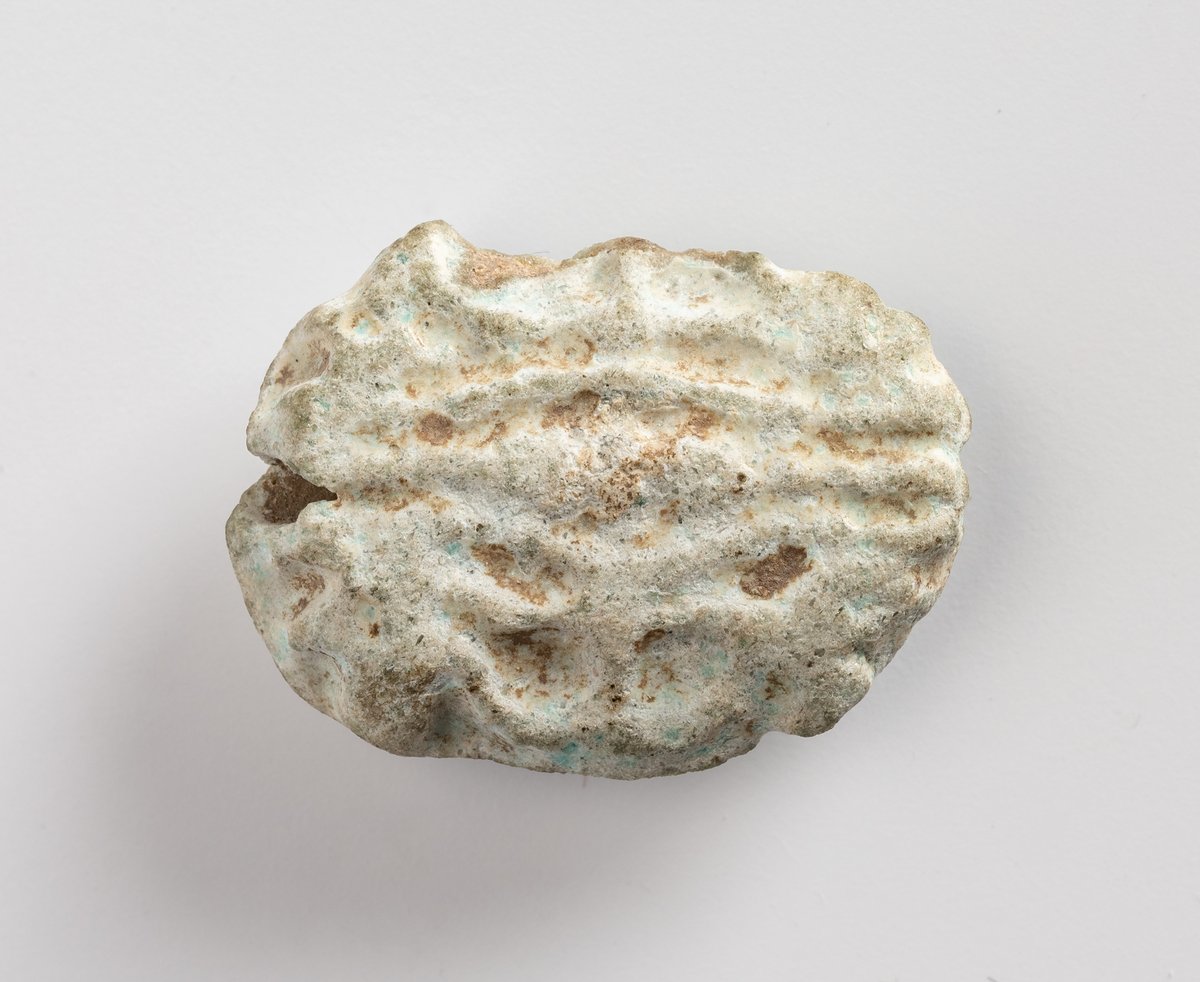
Wedjat Eye Amulet
Egyptian Art
| Place of production | Meidum (?), Egypt |
|---|---|
| Date | 2118-1837 BC |
| Object type | tomb equipment |
| Medium, technique | Wood, gessoed, painted |
| Dimensions | 17.5 × 3.8 × 3 cm |
| Inventory number | 51.240 |
| Collection | Egyptian Art |
| On view | This artwork is not on display |
Wooden servant statuette depicting a man striding and leaning slightly forward. He wears a white apron on his brick-red body that comes down below the knees; his hair, the eyebrows, the contour of his white eyes, and the beard along his chin are painted black. The arms, once attached to the trunk with dowels, are now lost. This type of statuette can be considered as a funerary equipment characteristic of elite burials from the late Old Kingdom to the early Middle Kingdom. Be they stand-alone or group figures, the servant statuettes depicted a range of activities carried out in the fields, in the granaries or in workshops of various kinds, and the wide range of goods they produced served to ensure a continued supply for the tomb owner in the afterlife. Following the end of the Old Kingdom, a transition to mass production entailed a gradual simplification of their design: instead of modelling the unique, subtle details, the emphasis was generally placed on making simple template forms that could be quickly and easily carved and utilised in several ways. Such a tendency is nicely illustrated by this present statuette with its thin, columnar torso and legs tapering in a diamond shape, on which merely a deep, vertical incision indicates the relative position of the striding legs. Such a stock body could be easily transformed into a variety of worker figures by attaching the appropriate arms to it. However, the opposite also holds true: in the absence of the arms, it is no longer possible to determine what activity the figure once performed. The statuette was claimed by its former owner to have come from Meidum, but very similar figurines are mainly known from the cemetery of Sedment and a few other Middle Egyptian sites.
This record is subject to revision due to ongoing research.